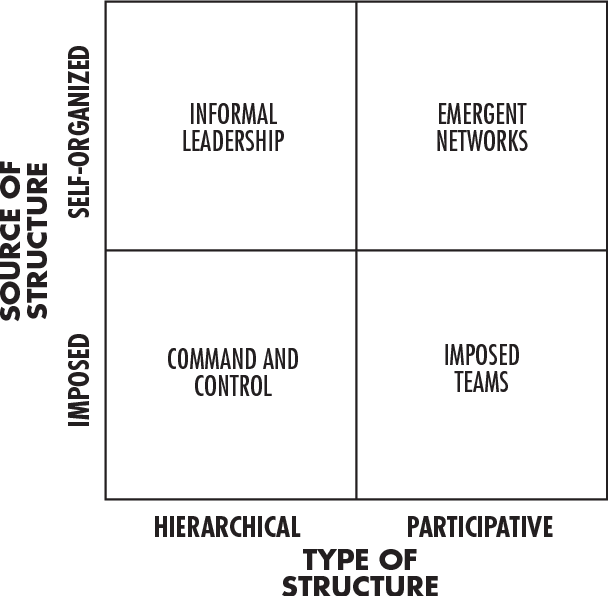Evolution: The Dance of Emergent and Resultant Change in the Modern Enterprise

In the relentless current of modern business, the very nature of change itself is evolving. We often speak of “change management” as a linear process, a predictable journey from point A to point B. Yet, true transformation rarely follows a straight line. Instead, it unfolds through two distinct, yet interconnected, forms of evolution: resultant change—the planned, deliberate outcomes—and emergent change—the organic, adaptive shifts that arise from within. Understanding this dynamic interplay is paramount for leaders seeking not just survival, but sustainable growth and the unlocking of unforeseen opportunities.
The Illusion of Resultant Change and the Fixed Mindset
Traditionally, change initiatives have been heavily skewed towards the resultant. Leaders meticulously craft strategic plans, define KPIs, and roll out new processes, expecting a direct, predictable outcome. This approach often stems from a fixed mindset, where change is viewed as a finite project with a clear beginning and end, a problem to be solved rather than a continuous state of being. Organizations operating with this mindset often resist deviations from the plan, seeing unforeseen challenges as failures rather than opportunities for adaptation.
Drawing from the neuroscientific perspective on “resultant action,” we can understand this tendency on a deeper level. Just as the book We Are Our Brains suggests that our conscious “will” to act is often a pleasant illusion that follows a pre-existing unconscious brain process, the organization’s reliance on a fixed, top-down plan can be seen as a similar illusion. The belief that a strategy can perfectly dictate an outcome fails to account for the organization’s “unconscious” nature—its embedded culture, collective habits, and human dynamics. The resultant change is not simply a product of the plan; it is a manifestation of deeper, underlying forces.
As we explored in “unbreakable core” such plans, however brilliant, often falter when they encounter the unpredictable human element. They fail to account for the “invisible architecture” of an organization’s DNA, where resistance, mistrust, or misalignment can derail even the most well-intentioned initiatives. The fixed mindset, by its very nature, struggles with the inherent uncertainty of true transformation, leading to rigid structures that break rather than bend. This can stifle innovation and prevent organizations from capitalizing on new market dynamics or technological shifts.

Embracing Emergent Evolution and the Growth Mindset
In stark contrast, emergent change is a testament to the organic, adaptive capacity of an organization. It’s the continuous learning, the spontaneous collaboration, and the bottom-up innovations that arise when individuals and teams are empowered to respond to evolving circumstances. This form of evolution thrives on a growth mindset, where challenges are seen as opportunities for learning, and continuous adaptation is embraced as the norm.
Leaders who cultivate this mindset understand that true, sustainable change doesn’t solely reside in the grand strategic blueprint but in the daily interactions, feedback loops, and collective problem-solving of their people. It’s about nurturing an environment where experimentation is encouraged, failures are seen as valuable lessons, and the “unwritten code of conduct”—the organizational DNA—is healthy enough to absorb and integrate new realities. This foundational alignment, as discussed in “unbreakable core,” is the bedrock upon which all successful change is built, allowing for a dynamic, rather than static, progression. This approach naturally uncovers new pathways and future opportunities that rigid planning might miss.
Ultimately, the most effective leaders do not fight the emergent forces within their organization. Instead, they act as facilitators, consciously guiding the enterprise in a way that aligns with the “resultant action” that is already taking place at a deeper level. By harmonizing the planned with the organic, they move beyond the illusion of absolute control and unlock a more authentic and powerful form of transformation.
The Modern Workplace: Unlocking New Opportunities Through Human-Centric Evolution
The modern workplace, increasingly shaped by rapid technological advancements and global interconnectedness, demands an emphasis on emergent evolution to unlock new and future opportunities. While tools like automation and artificial intelligence can handle repetitive tasks and enhance efficiency, the unique human capacity for creativity, empathy, and complex problem-solving becomes even more critical. When organizations focus on fostering a culture where humans excel at establishing solid relationships, collaborating across disciplines, and exploring novel ideas, they create an environment ripe for emergent opportunities. This allows for a continuous discovery of new markets, innovative products, and more resilient business models. The focus shifts from simply executing a plan to continuously adapting and evolving, ensuring the organization remains agile and competitive in an ever-changing landscape.
Cultivating the Culture for Emergent Evolution
To thrive in this new paradigm, organizations must intentionally cultivate a culture that champions emergent evolution. This means prioritizing the human infrastructure—the “unbreakable core”—over rigid plans. It calls for creating psychological safety , where individuals feel secure enough to voice ideas, challenge assumptions, and even admit mistakes without fear of retribution. It means fostering deep, authentic human connections and building those vital “lifelines” that Keith Ferrazzi so brilliantly articulates in “Who’s Got Your Back” . These trusted circles become powerful engines for continuous learning , sharing insights, and accelerating skill development across the organization. When people are connected, supported, and empowered, they become the agents of emergent change, naturally adapting and innovating, making the entire organization more resilient and agile, and positioning it to seize unforeseen opportunities.
The Jobsian Blueprint: Empowering Emergent Evolution
Few leaders embodied the spirit of emergent evolution and the power of people more profoundly than Steve Jobs. His philosophy on leadership and hiring was a direct counterpoint to the rigid, top-down approach, emphasizing the critical role of human talent in driving innovation. Jobs famously stated, “It doesn’t make sense to hire smart people and then tell them what to do; we hire smart people so they can tell us what to do.” This core belief underscores the essence of emergent change: that the most valuable insights and solutions arise organically from empowered individuals.
Jobs was relentless in his pursuit of “A+ players,” believing that “a small team of A+ players can run circles around a giant team of B and C players.” He understood that these highly talented individuals, when given autonomy and a clear vision, are inherently self-managing and will drive innovation from within. By fostering an environment where A players enjoyed working with each other and were constantly challenged, he cultivated a culture where emergent solutions were not just tolerated, but expected. This approach, rooted in trust and a shared passion for the vision, allowed Apple to continuously adapt, innovate, and lead, demonstrating that true leadership lies not in dictating every step, but in empowering the right people to discover the path forward and capitalize on new opportunities.
Building for the Unpredictable Future
The future of change management is not about choosing between resultant and emergent evolution, but about mastering their synergistic dance. Leaders must recognize that while resultant change provides direction and structure, it is the emergent, human-driven evolution that truly delivers sustainable growth, resilience, and the ability to discover and seize new opportunities. By cultivating a growth mindset throughout the organization and prioritizing the health of its organizational DNA—its people and their relationships—we empower the very forces that will navigate the unpredictable currents of the modern enterprise. First, build your people, nurture their connections, and foster their capacity for adaptive, emergent evolution. They will then build the future, one dynamic, human-centric step at a time.